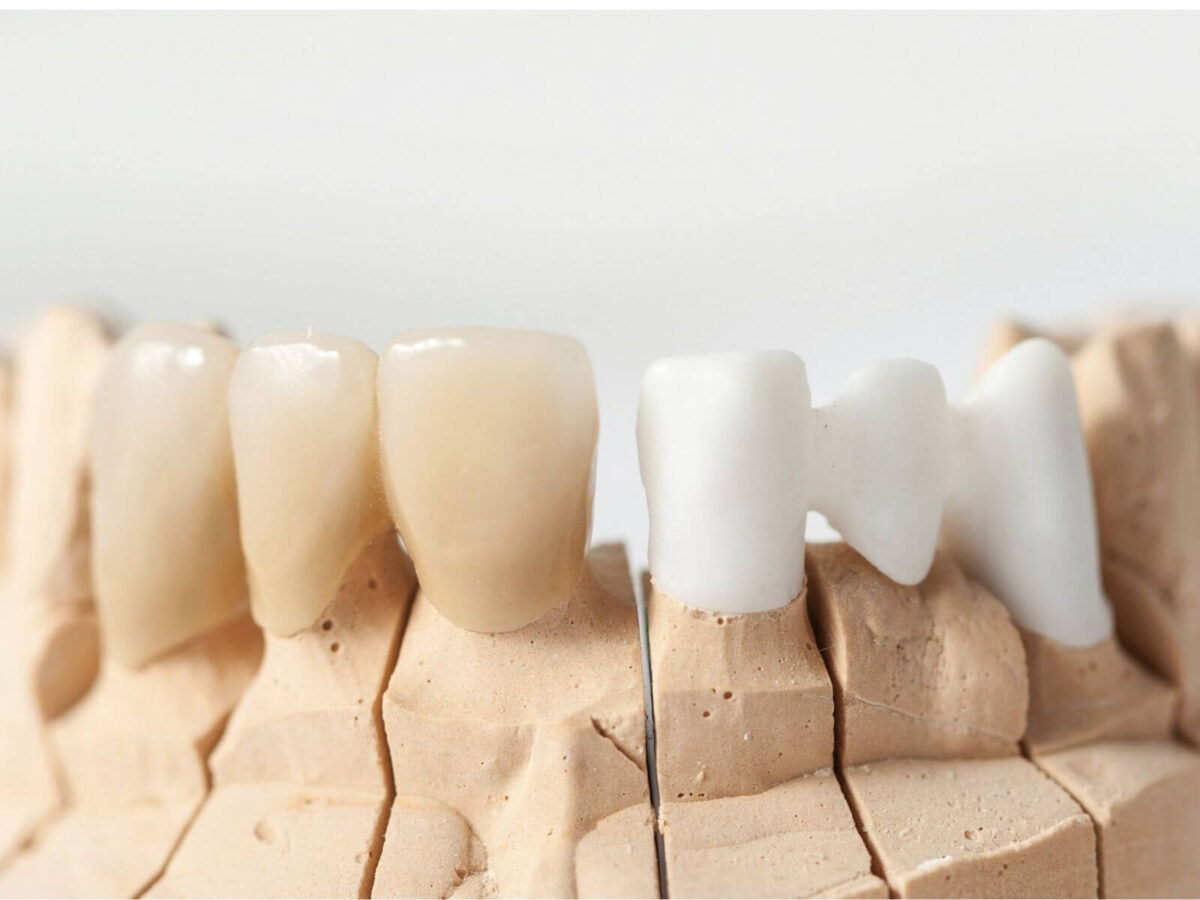Blog
Dental hygiene tips for healthy teeth & gums

Dental Bridge Vs. Dental Implant: Which Is Right For You?
Tooth loss is a common problem for most adults. This makes people hesitant to smile or talk properly. Your smile is an essential part of your personality. You also need proper teeth alignment to chew food. It also maintains facial symmetry.
This article will talk about effective alternatives for missing teeth. It will also compare dental bridges and implants to determine which suits you. You can identify your preference correctly by comparing the pros and cons and the differences between the types. Let us explore the different alternatives to determine your type.
Dental Bridge Explained
Dental bridges are alternatives that use anchoring teeth for support to replace missing teeth. It comprises one or more crowns and can fill gaps with false teeth called the pontics. It requires maintenance and can last over a decade. Usually this alternative works for five or six years. It is a simple procedure requiring no surgery or complex procedure.
Pros And Cons
Pros
- likely to be covered by insurance
- doesn’t require bone grafting or invasive surgery
- usually a lower upfront cost than dental implants
- It might require just two dental visits spread over a couple of weeks
Cons
- Replacement every 5 to 7 years, but can last more than 10 years with proper care.
- Offers a natural-looking appearance with age
- This leads to more cavities and tooth decay in neighboring teeth than with implants.
- It can damage the healthy teeth around the missing tooth
Type Of Dental Bridge
The dental bridge type you choose is essential to your oral health. You can discuss each dental bridge type with your dentist to understand more. This will help you make an informed decision about your oral health.
- Traditional Dental Bridge
Traditional Dental Bridge serves as the fundamental tooth structure. This is because crowns are required to attach to either side of the missing tooth to maintain bridge stability. - Cantilever Bridge
The Cantilever Bridge works when you have one available supporting the adjacent tooth next to the gap. - Maryland Bonded Bridge
The Maryland Bonded Bridge uses a porcelain or a metal framework. It delegates to the rear of adjacent teeth to serve rather than traditional crowns. - Implant-Supported Bridge
A dental implant-supported bridge functions without natural teeth. It depends on implanted structures for support.
Dental Implant Explained
A dental implant is a titanium post that supports the crown. It is surgically inserted into your jawbone to anchor the position. It is helpful to patients with missing teeth due to tooth decay, injury, or periodontal conditions. This procedure is lengthy and might take up to six months. It offers a long-lasting solution for missing teeth.
Pros And Cons
Pros
- can last over 15 years and is the longest-lasting option on the market
- It can retain a natural-looking appearance longer than bridges
- It doesn’t damage the healthy teeth around the implant
- Very high 10-year success rate
Cons
- It is less likely to be covered by insurance
- This process can take up to 6 months
- Higher upfront cost
- This can lead to surgical complications
Type Of Dental Implant
You can discuss different options for dental implants to find the right fit for you. These implants might take a few months to attach, but they offer a long-lasting solution compared to all other options.
- Single-Tooth Implant
This implant replaces one missing tooth with a single titanium post and a crown. - Implant-Supported Bridge
This type of implant treatment requires multiple teeth loss in a straight line. It uses dental implants to substitute for the absent natural teeth. - All-on-4 or All-on-6 Implants
It serves patients without teeth in an arch. It connects missing teeth to a complete set of dental replacements with minimal dental implants.
Which is Better for You?
The right alternative for missing teeth depends on a long list of factors. You can evaluate these to determine which treatment type will best suit you. You can also visit dental experts at Tidwell Road Dentist, TX to consult your queries. You can also compare these treatment options and their types to determine the proper treatment.
- Cost: If you have dental insurance, it is more likely to cover dental bridges. But you can check your budget to find the right fit if you don’t have one. You can also consider partial dentures or other affordable dental treatments if both are out of your budget.
- Number of teeth Missing: Dental bridges are recommended for people with more missing teeth. Each tooth requires a separate implant, making the procedure extremely expensive and invasive.
- Overall Health: Dental implant procedure involves surgery, which is not an excellent option for most people. It takes longer to heal and is more expensive than dental bridges. People with diabetes or leukemia are not recommended invasive procedures. This makes dental bridges a better option for them.
- Time: Dental implants take months, while dental bridges are quick. People who need quick fixes for missing teeth can get dental bridges.
Conclusion
Most people determine the proper treatment based on the cost of the procedure. But this is not the right way. Before including the healing time, durability, and needs, you should consider all factors. You can consult a dentist to check your health reports and dental conditions to determine the proper treatment.
Implants have a high success rate and durability but are invasive. Similarly, dental bridges are much more affordable but are not that durable. You can visit Tidwell Road Dentist TX dental experts to discuss these factors and find the proper treatment. You can also learn a lot more about the types and benefits of different therapies to understand them better.


